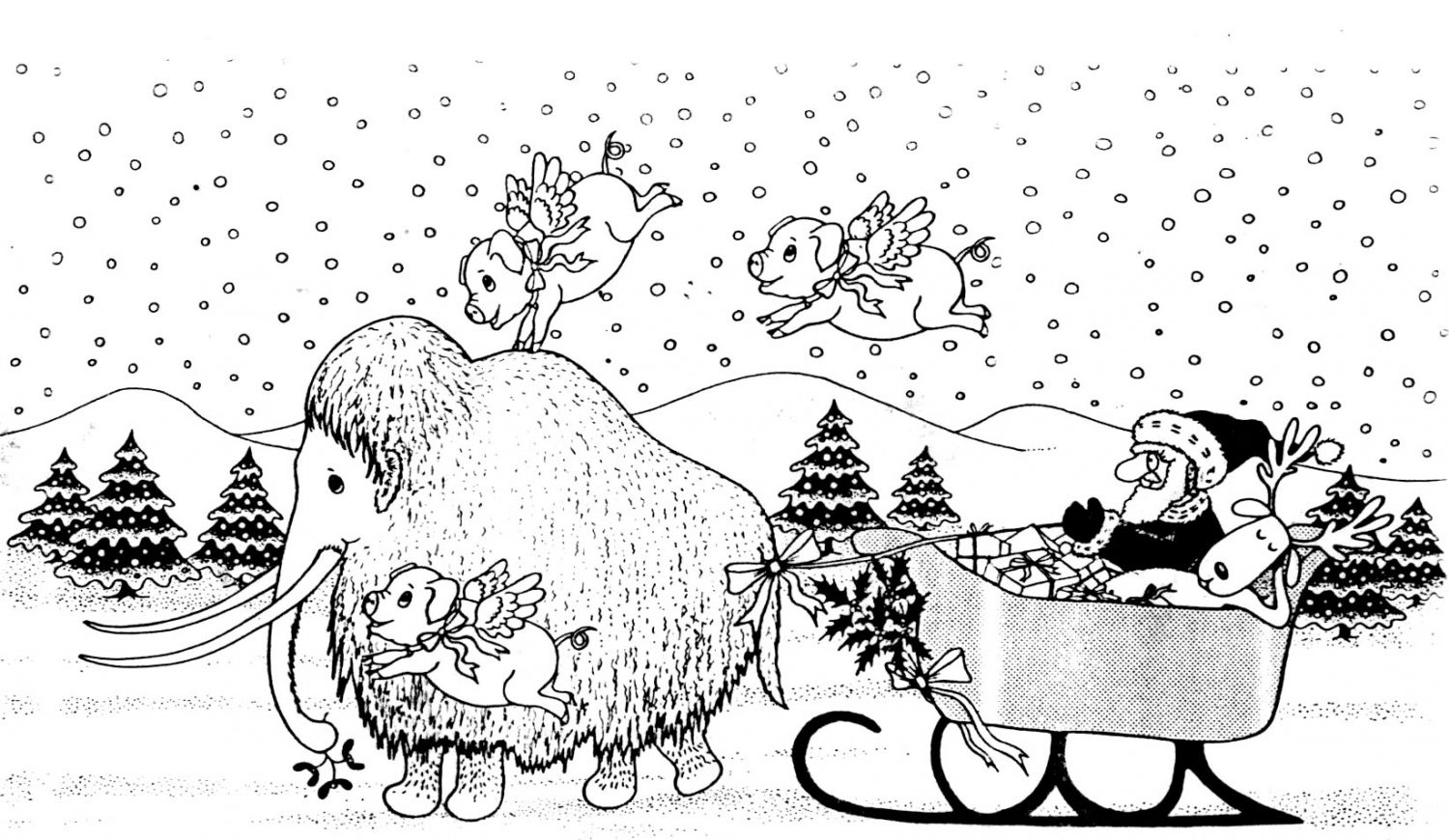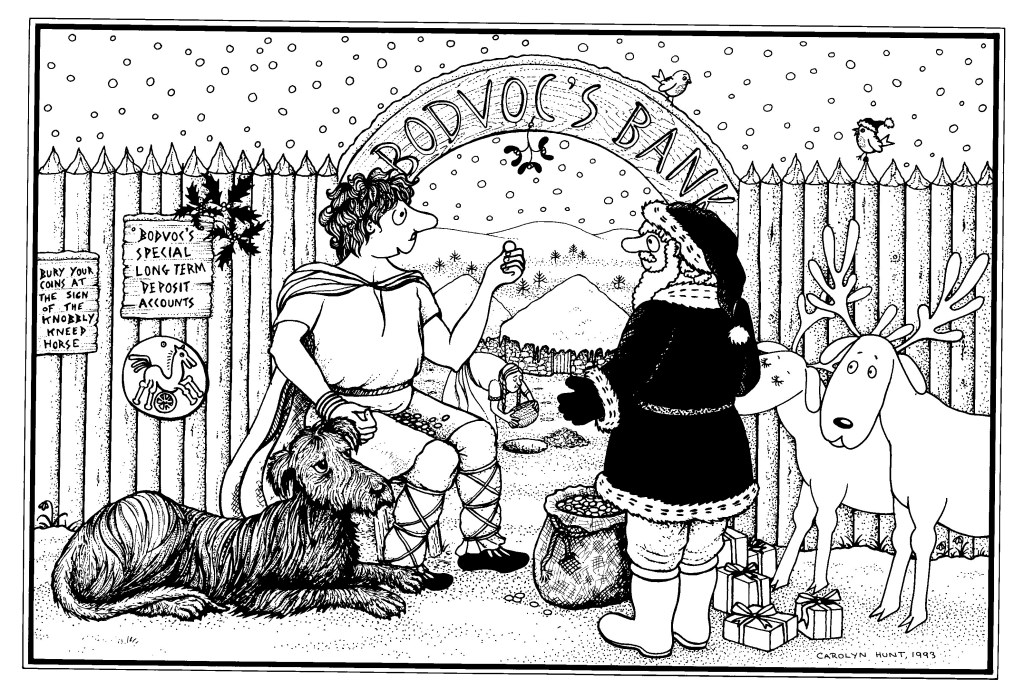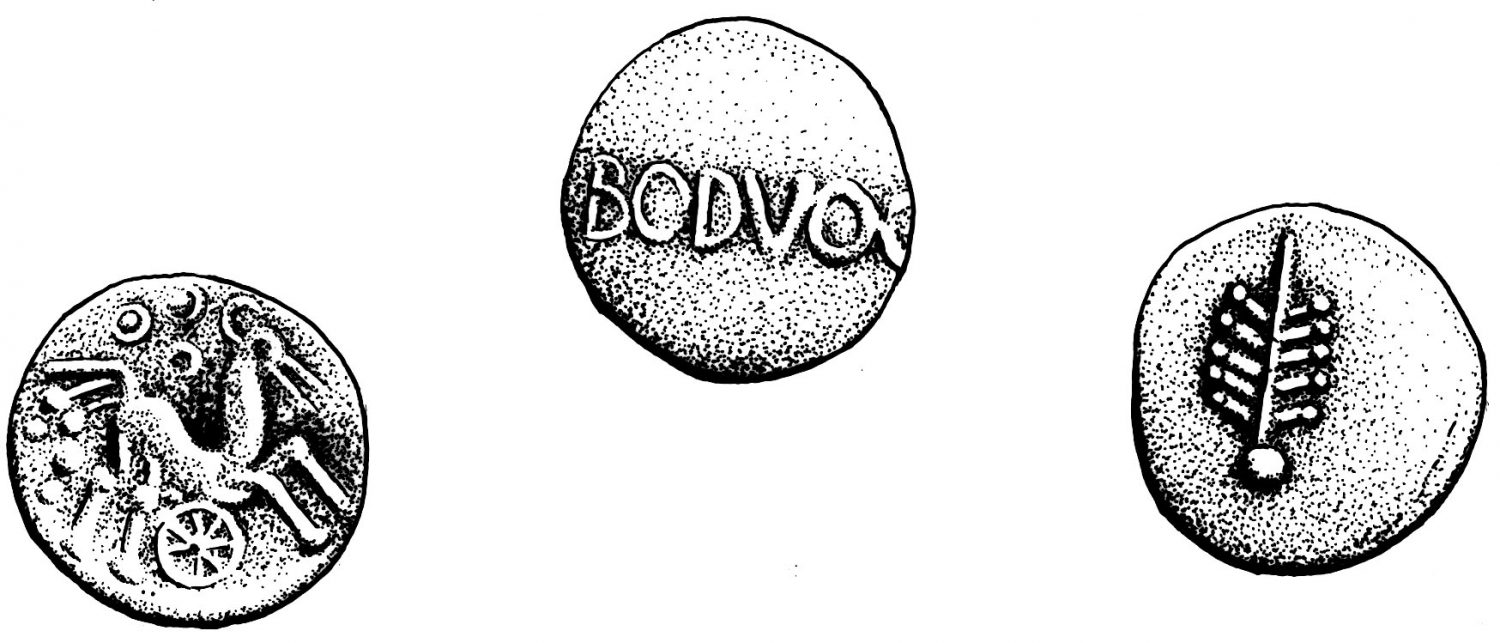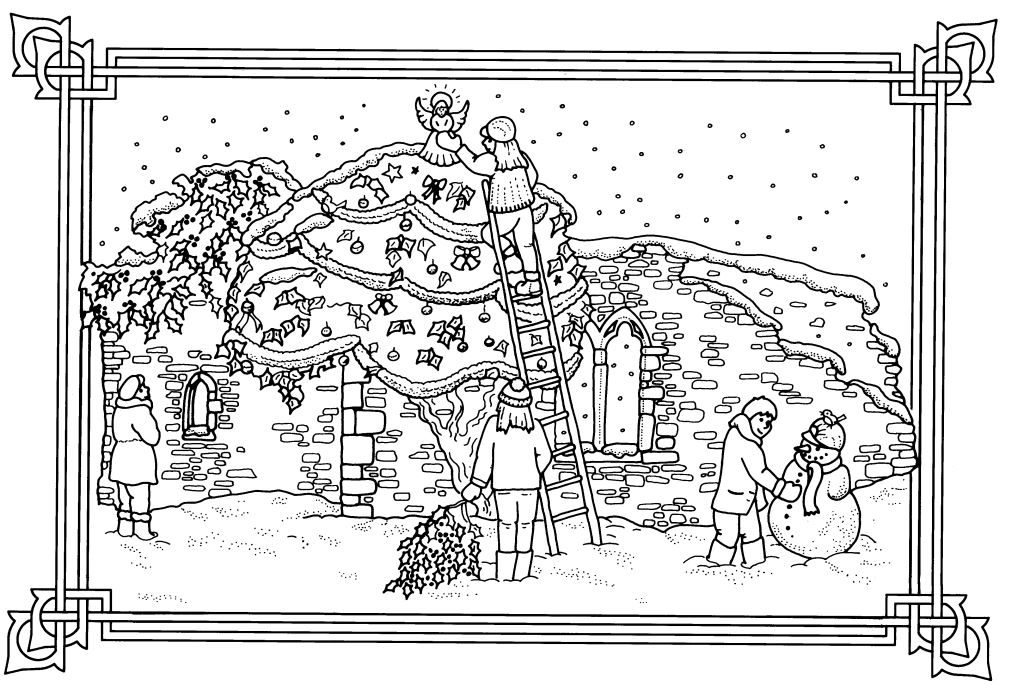Time travelling Father Christmas
- 21st December 2017
Father Christmas visiting an Iron Age settlement, a mammoth sleigh ride and festivities at a ruined medieval church – Christmas cards with a difference. Some years ago, our illustrators used archaeological sites we’d worked on as inspiration for festive card illustrations. Below are several we’ve recently rediscovered.

Strensham mammoth Christmas card (by Carolyn Hunt)
Here, Millicent mammoth is pulling Father Christmas’ sleigh 200,000 years ago in what is now south Worcestershire. Inspiration came from the 1990 discovery of a young adult female woolly mammoth at what is now Strensham Services, near junction 8 of the M5 – more details are given in this blog. The flying pigs are a reference to an old staff magazine, called ‘The Porker’ for reasons that are no longer apparent. Although wild boar were also around during Millicent’s 20-25 year lifetime, some artistic licence has been used, as domesticated pigs were not around until the Neolithic, around 8000 years ago.

Bodvoc’s Bank Christmas illustration (by Carolyn Hunt)
This drawing is based on a late Iron Age coin hoard and settlement near Pershore. In 1993, Christmas arrived early for the three metal detectorists who discovered 7 gold and 976 silver/ silver-plated coins. We carried out an excavation, to see what contemporary activity was around, and found a second, disturbed cluster of 5 gold and 290 silver coins. Legally declared as treasure, the coins were immediately put on display in the British Museum. You can still find them in the museum’s online collection catalogue, although they’re currently not on show.

BODVOC Iron Age coins (12-13mm in diameter)
So, how old are the coins? Who buried them there and why? Extensive fieldwalking and a geophysical survey revealed that the hoards were on the southern edge of a large Iron Age to Roman settlement. Look closely at the drawing and you’ll see an Iron Age roundhouse in the background. The two hoards were buried at slightly different dates, either just before or shortly after the Roman invasion in 43AD. Whilst most of the coins are uninscribed (don’t include a name), there are coins attributed to seven different rulers, including BODVOC. Can you see the horse and wheel emblem in the festive illustration? This features on the obverse side of some BODVOC coins found at Pershore.
All very interesting, but we still haven’t answered the question of why bury them. Iron Age hoards are mostly thought to be religious offerings or a temporary measure to protect wealth. Due to the Roman invasion, most hoards around this date are thought to be the latter. Interestingly, the coins show little signs of use – perhaps not what you’d expect from a wealth stash. The authors of this article cautiously suggest the hoards were a gift, not from Father Christmas, but perhaps to a similarly mythical being.

Christmas festivities in a ruined church (by Laura Templeton)
Our third festive scene was inspired by a dilapidated medieval church in north Herefordshire, where we carried out archaeological investigations and a building recording survey of the surviving walls. Laura’s illustration shows the church’s overgrown state prior to restoration works.
Like many Herefordshire churches, it probably started as a chapel to the nearby motte and bailey castle, with a stone church later built on the site in the 12th century. Bits of this stonework still exist, but the church was gradually altered and repaired during the 13th to 17th centuries. After a new local church was built in the mid-19th century, it fell out of use and quickly became dilapidated.
How many Christmas services has that church held over the years? Christmas celebrations have changed a lot since then the 12th century: the Protestant church came into existence during the 16th century, and since the late 19th centuries Christmas has been transformed from a relatively small religious festival into a significant public holiday.
However you choose to celebrate Christmas or spend the public holiday, we hope you have a happy time!
Love the Xmas Card illustrations. Have a very Happy X,mas everyone.